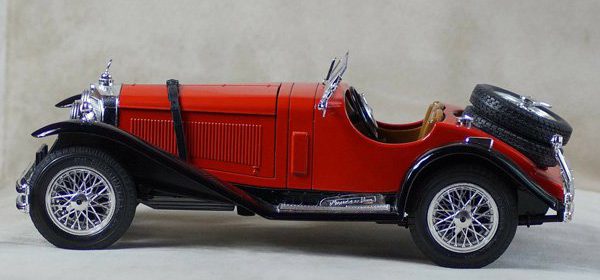Laser imaging for reverse engineering applications


The castings for the classic rare cars and classic Harley Davidson motorcycles would never have been replicated if not for reverse engineering technology. This technology makes use of laser imaging of complicated 3D items, allowing the users to recreate the plans or blueprints of many life-saving devices, luxury vehicles, airplanes and many other types of machines. ReverseEngineering.com assimilates the MicroScribe with the Kreon Skiron laser imaging machines through proprietary reverse engineering technology to accommodate the industries in the aerospace, defense and other sectors.
Thanks to ReverseEngineering.com, the software for this technology is made easily available to everyone who needs to reconstruct or enhance on existing items that no longer have the original blueprints or which can be best improved via 3D laser scanning. If you are addicted to older cars or bikes, then you would have understood a long time ago how difficult and expensive it was to get moldings of their parts, specifically when the original blueprints have vanished or been destroyed. Producers used to consider this a nightmare especially when they needed to come up with an improved version of the said vehicles. OEM Castings are generally made available only for repairs or for a small selection of autos. What happens when the castings or OEM parts are no longer existing?
The auto-racing industry is one of those that characteristically has a special requirement for laser imaging via reverse engineering. Racing is a specially risky occupation, and while the drivers are livewires and push their limits, they would never be so careless to careen down the track at 180 miles per hour without the security that the suspension parts in his or her car would are sound. ReverseEngineering.com makes sure that the castings for cars are accurately replicated. It would generally cost much money to do that, but thanks to reverse engineering it is now viable to reproduce very precise castings in a cost-effective manner. Most older autos are limited production and that also goes for the technical documentation.
With reverse engineering, manufacturers can reproduce the parts and every nook and cranny of the autos without a hitch, while staying exact to their geometry. There was a time when manufacturers were perturbed when they visited all the professional foundries only to find out that they could not reproduce the casts. Apparently, the talent levels of the initial producers were way above what the current generation could match. With the MicroScribe 3D laser scanning, producers are now able to recreate a 3D digital replication of the vehicles and create a database that will aid them in improving existing technology.
The paramount aspect about MicroScribe’s reverse engineering machines is that they can precisely build 3D computer models of almost all items, whatever the size and shape. And those things can simply be finished in a matter of minutes! The tangible world has nearly become conquerable thanks to reverse engineering technology. Imagine how manufacturers can develop existing technology for race cars and you will understand that the current speed known to mankind may just be history in a short time. With reverse engineering, it is quite easy to be overwhelmed with the multiple prospects and possibilities that the world can accomplish nowadays not only in the industry of racing and car manufacturing but also in education, animation and the arts.
